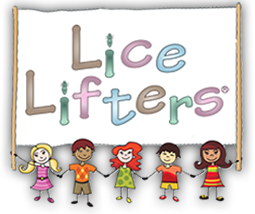
Don’t Be Nice to Lice!
So, the kids are back in school and the dust has finally settled. Our routine is established, the kids are waking up without too much fuss, and making it to school on time and with everything they need in their backpacks (for the most part!). Now we need to turn our attention to the reality of head lice and its pervasive “heebie-jeebie” reach throughout our schools.
I happen to know an expert in the field of lice prevention and treatment in the Dallas-Fort Worth area named Beth Kirschner, of Lice Lifters DFW, who uses an ALL-NATURAL approach to kill head lice (we love natural methods!). She is guest blogging for me this week on this very important and often misunderstood topic that affects thousands each year. To learn more or to pose a question to Beth, please visit her website.
Hair Lice: Fact and Fiction
As a mom who’s daughter has had head lice 10 times, yes really, I get it! After attempting to rid my kids of lice through various and sundry means with no success, I learned a lot about what works best. In fact, the experience led me to open my first Lice Lifters Treatment Center in Frisco last year. We have been so blessed to help so many families in the past year that we have expanded and now have opened our second treatment center in Southlake to help cater to the Tarrant County Metroplex.
Myth Busters
Part of our mission at Lice Lifters is to make a difference by spreading the truth about lice, how we get them, and how to get rid of them. Nevertheless, myths abound in popular culture, and well-intentioned parents find themselves bombarded with falsehoods on a regular basis. Today, let’s take a look at some of the most common myths surrounding lice and dispel them once and for all.
MYTH #1: Lice prefer dirty hair.
Not true! These creatures are equal opportunity and do not discriminate on the basis of shampooing frequency. In fact, lice may be more likely to infect clean hair because it is easier to attach to a squeaky-clean hair shaft.
MYTH #2: Lice can infest your home.
False! Lice can only live away from a human host for 24-36 hours – they can’t even live on your pets. The eggs, or nits, cannot survive if not attached to a hair shaft. That said, excessive cleaning measures in the home are simply not necessary. A good vacuuming and hot tumble in the dryer for any bedding or stuffed animals should be sufficient.
MYTH #3: Lice like long hair.
Sure, lice like long hair – and short hair as well! Bottom line: boys or girls with short hair are not protected from lice any more than those with long tresses. Even kids with buzz cuts can get lice! If there’s an outbreak in your area, check long- and short-haired family members with equal scrutiny.
MYTH #4: If I’m not itchy, I can’t have lice.
Wrong! Only about half of people who carry lice experience stereotypical head scratching. It is lice bites more than the lice themselves that cause itching, and it can take 3 to 4 weeks for the bites to become an issue. If one family member is diagnosed with lice infection, have everyone checked regardless of symptoms – mom and dad, too!
What is Lice?
A louse (singular for Lice) has three life stages – egg, nymph, and adult. Once a female louse lays its eggs, or nits, it can take more than a week for them to hatch. The nymph is an immature insect that takes a week to reach adulthood. A mature female louse can lay up to 6 eggs per day. Once mature, an adult louse can live up to 30 days on a human head with regular feedings of blood – yuck!
What is a Nit?
Nits are lice eggs laid by the adult louse at the base of the hair strand near the scalp. Nits are firmly attached to the hair shaft and are oval-shaped and very small and can be difficult to see. They are held onto the hair strand with a kind of “glue” that can make them difficult to remove.
Nit Facts
- Head lice nits usually take about 8–9 days to hatch.
- Millions of Americans, approximately 10-12 million, will become infested with lice on a yearly basis.
- If all nits are not removed, another outbreak is likely. Get the Nit!
Preventative Measures
If your child has long hair, we encourage them to put their hair up in one braid or a bun to keep contact away from other kids heads.
Encourage your kids to bring their own pillows at overnights and not share brushes or hats with their friends. As a parent, be watchful.
When your child comes back from overnight event or from spending time at a friend’s house, know that nits are more easy to see in natural light, so feel free to see if you notice any nits on your child’s scalp. Taking that extra moment to look things over could save you and your family from a lice outbreak.
Don’t use selfie sticks! In our culture of all cell phone selfies, it’s no wonder so many of our kids deal with head lice. Since lice are transferred by direct head-to- head contact, this is a no brainer. Put the selfie stick away and keep your heads apart!
Please visit Lice Lifters for more information on all-natural treatment options.

